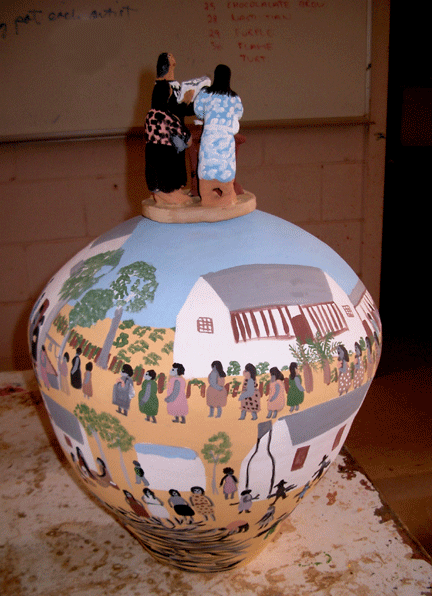Betrayal – Harold Pinter
The State Theatre Company of South Australia
The
Playhouse, Canberra Theatre Centre
19-22
August
Betrayal features a tight love-triangle
with a hypotenuse that stretches and contracts depending on the lengths of the
legs. It is highly geometric, down to the circling set which turns clockwise or
anti-clockwise depending on whether the scene changes forwards or backwards in
time. It’s really not that difficult to keep track, however, because the story
is perfectly told through the strength of the acting and direction (Geordie
Brookman).
Emma
(Alison Bell) is married to Robert (Mark Saturno), but she has an affair with Jerry
(Nathan O Keefe), his best friend. It seems that everyone is being betrayed by
someone else – who knew about the betrayal and when they knew it is one of the
issues of the play. Even though the play only features the three main
protagonists (and a formidable cameo by John Maurice as a waiter whose
exuberance stops just the right side of hyperbole), every action causes
concentric ripples which threaten to break out of the circle.
The set
and lighting (designed by Geoff Cobham) is taught and claustrophobic. Half of
the set is backed by slats which resemble vertical blinds (or fly paper) and
through which the lights blaze in the stylistic scene changes. These highlight
the trapped atmosphere of a cage or a blood-letting arena where gladiators goad
each other. It also provides a break (both for the actors and the audience)
from the relentless realism of the nine scenes and the awkward, tense dialogue.
The
script is as pure as you would expect from Pinter and is beautifully enunciated
from the ennui and the casual laughter to the spitting out of words in a
calculated attempt to wound. The famous Pinteresque pauses and silences are
captured masterfully; in a Q&A session after the show the actors explained
that Brookman directed them to hold the pauses until it became physically
uncomfortable not to speak, and this is executed with aplomb.
Nothing
looks particularly fun or erotic in this sexual entanglement. There is barely a
touch or an embrace, and when Emma and Robert are on a supposedly romantic
holiday in Venice, the bed is representatively hard and forbidding, and the
couple remain determinedly at either end without contact. The depth and misery
in many sections makes one question why anyone enters into such a liaison in
the first place, although there is a hint of promise at the end of the play
(which is the start of the affair), but we know the spark of excitement will
soon be extinguished.
The
brilliance of this play is that there are no glib answers or explanations, as
this scenario is both specific to the characters involved, and expands to
include the commonality of human experience. The characters tell each other
lies and the audience learns different versions of their stories; from whether
they caught a speedboat and read Yeats on Torcello, to in whose kitchen a child
was thrown up in the air and caught in a slightly scary game.
It’s
really about the men and their relationship to each other: they have long boozy
lunches and play squash, a game which was a 1970s metaphor for alpha-male
testosterone, played in a walled court with no open sides, and completely dependent
upon angles and the impact of ricochets. When Robert tells Emma that he has
always preferred Jerry to her and thinks perhaps he should have had an affair
with him instead, it is not merely an attempt to hurt her, but a thinly-veiled
truth. This is a man’s world after all –it was written by a man in 1978 – where
a woman is a man’s possession.
Jerry
is also married (to Judith) and, although we hear a lot about her, she is never
shown nor are her feelings ever really considered, which makes it easier for
the main protagonists (and us) to disregard her blatant betrayal. Even Emma can’t
break out of the stereotype; when she does something radical, such as having an
affair, she looks no further than her husband’s best friend, and goes no further
than a flat which she sets up as another home, with furnishings she chooses.
She happily cooks his dinner for him or brings him picnics at their lunchtime
trysts. It seems it is not her relationship but her imagination which is
stunted.
The
domestic drama has multiple shades and interpretations; the twisted chronology invests
minor details with major importance. They are white, middle-class academics
working in the world of art and literature – she runs a gallery; they are
publishers – and, even though we don’t necessarily like them, we are interested
in them. They are insular and yet somehow universal, which is a testament to
all involved.




















